 Fed Interest Rate | Current Data, Forecasts & FOMC Meetings
Fed Interest Rate | Current Data, Forecasts & FOMC Meetings
“The US Federal Reserve interest rate is the main monetary policy tool of the Federal Reserve System. It affects the cost of loans, inflation levels, and the overall condition of financial markets.”
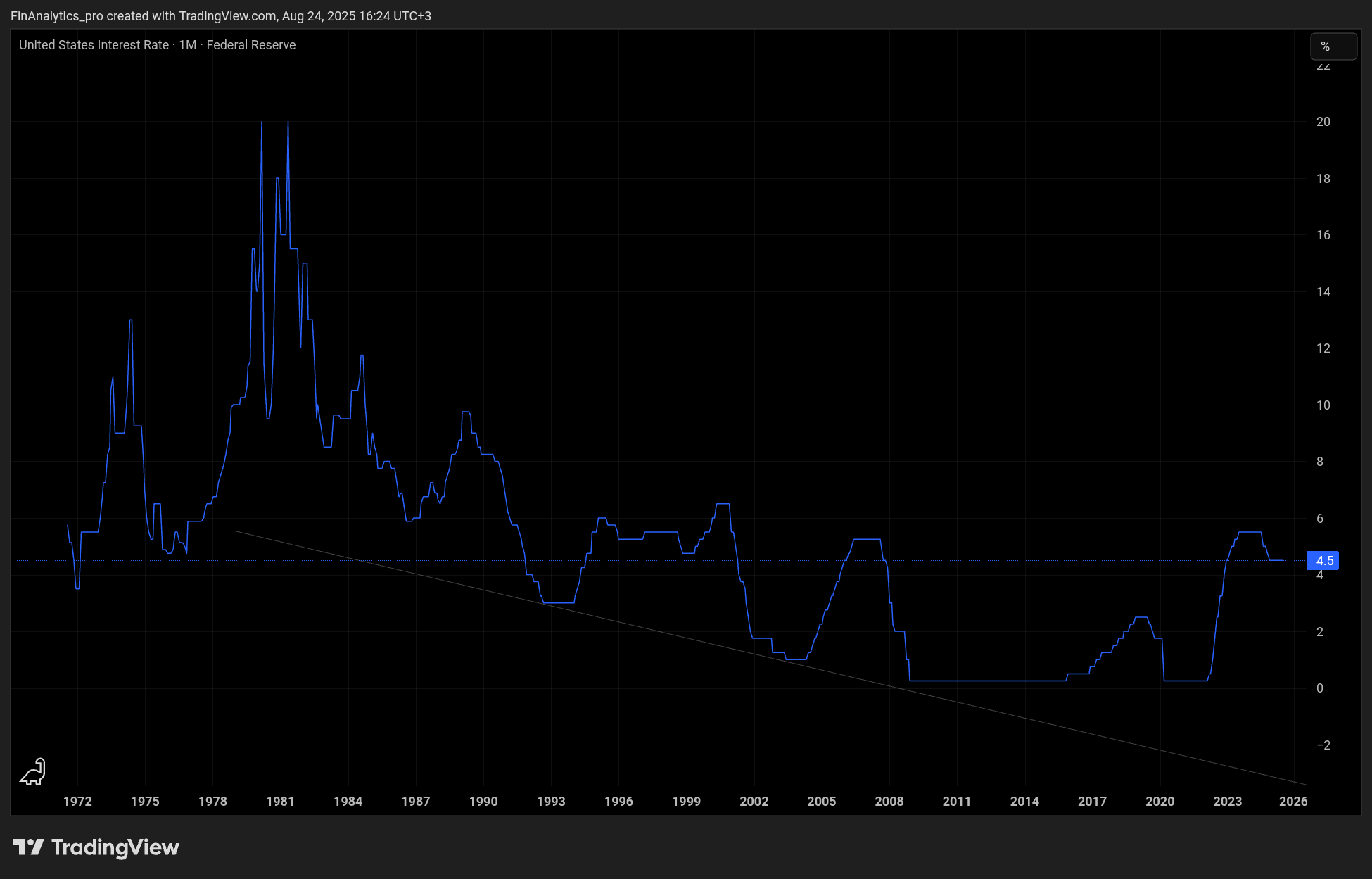
The Fed rate is effective until September 16, 2025.
The target range for the Federal Funds Rate, set by the Federal Open Market Committee (FOMC), is 4.25% – 4.50% as of July 31, 2025.
The Fed’s next key interest rate meeting is set for September 16–17, 2025.
According to the official website:
- January 28–29
- March 18–19*
- May 6–7
- June 17–18*
- July 29–30
- August 22 (notation vote) Statement on Longer-Run Goals and Monetary Policy Strategy
- September 16–17*
- October 28–29
- December 9–10*
* — meetings with the publication of the Summary of Economic Projections (SEP)
Jerome Powell: Fed Abandons Old Tools and Adjusts Course — Jackson Hole, August 22, 2025

Current Economic Situation
- The U.S. economy remains resilient despite changes in economic policy.
- The labor market is near maximum employment, and inflation has declined from pandemic-era peaks but remains above the target level.
- Emerging challenges include high tariffs, tighter immigration policies, and changes in tax, budget, and regulatory frameworks. These factors affect supply and demand and create uncertainty for Federal Reserve (Fed) policy.
Monetary Policy and Outlook
- The Fed’s policy remains data-driven and flexible.
- The federal funds rate is near neutral, with future decisions depending on inflation and labor market conditions.
- Currently, inflation risks are higher while employment risks are lower, so balancing the goals of maximum employment and price stability remains key.
Fed Strategy Update
A revised “Statement on Longer-Run Goals and Monetary Policy Strategy” has been released.
Key changes include:
- Removing the reliance on the Effective Lower Bound (ELB) of the federal funds rate as a key factor.
- Eliminating the “makeup strategy” (deliberate overshooting of inflation).
- Emphasizing the need to keep long-term inflation expectations anchored at 2 %.
- Defining maximum employment as the highest level sustainable without triggering price instability.
Fed Approach and Long-Term Principles
- Fed policy is not predetermined; decisions are made based on current data and a balanced assessment of risks.
- The practice of publicly reviewing the strategy every five years is reaffirmed, allowing structural economic changes to be incorporated and ensuring transparency and accountability.
- The focus remains on long-term price stability and a strong labor market, with the flexibility to adjust policy as economic conditions evolve.
Sourch: Official website of the Federal Reserve
Market reaction
The speech by Federal Reserve Chairman Jerome Powell at the annual Jackson Hole Symposium had a relatively soft tone and hinted at the possibility of a rate cut as early as September, which triggered a reaction in the financial markets.
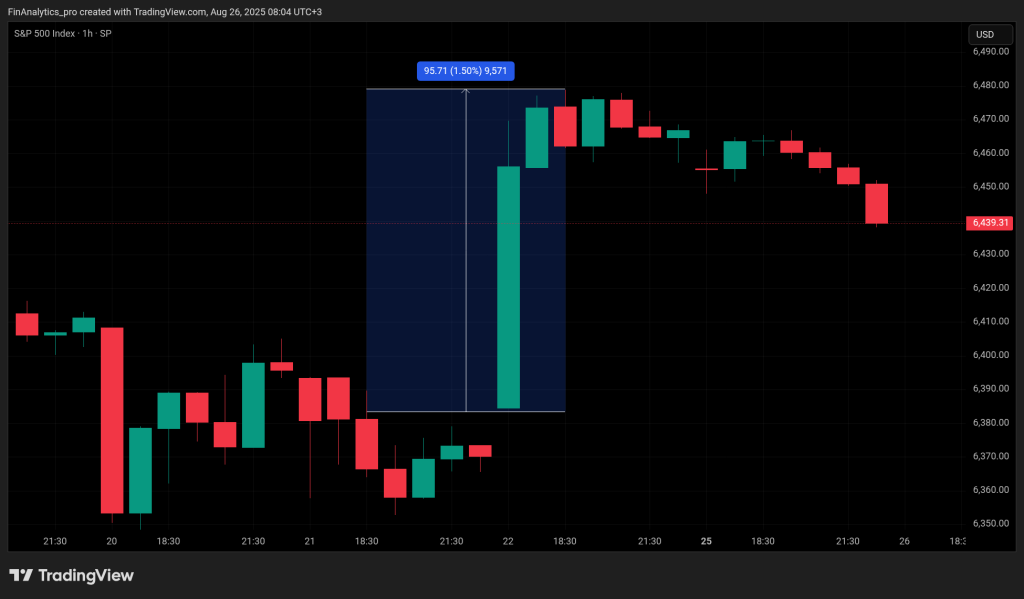
![]() The S&P 500 Index (SPX) rose by 1.5%
The S&P 500 Index (SPX) rose by 1.5%
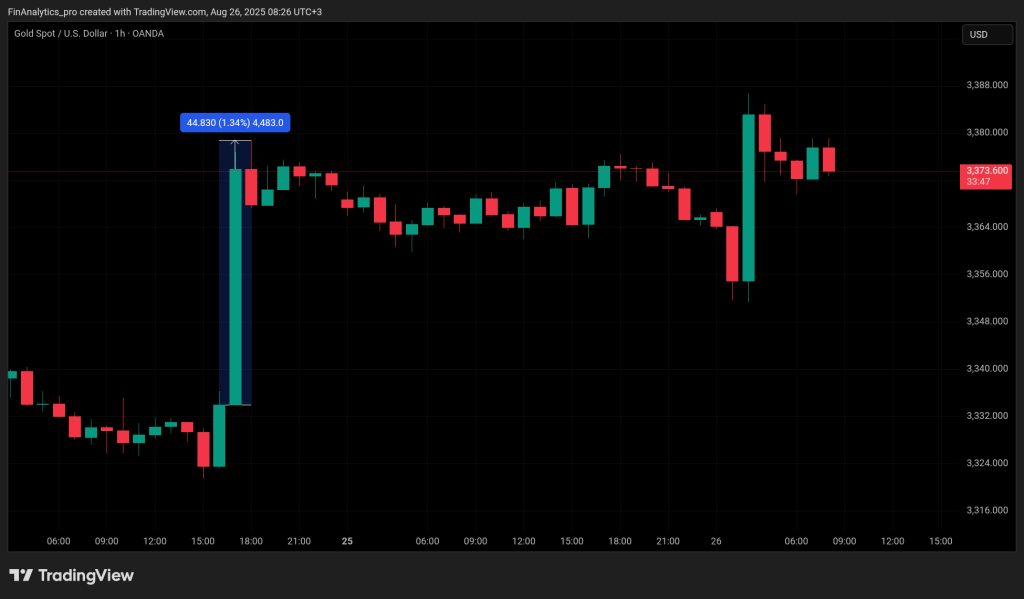
![]() Gold rose by 1.34%
Gold rose by 1.34%
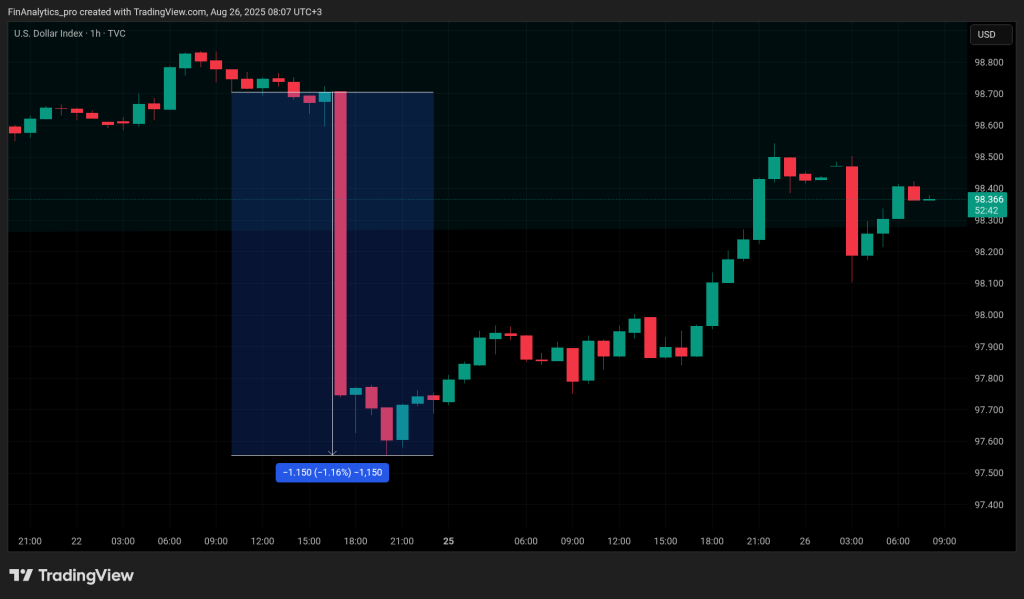
![]() Dollar Index (DXY) fell by 1.16%
Dollar Index (DXY) fell by 1.16%
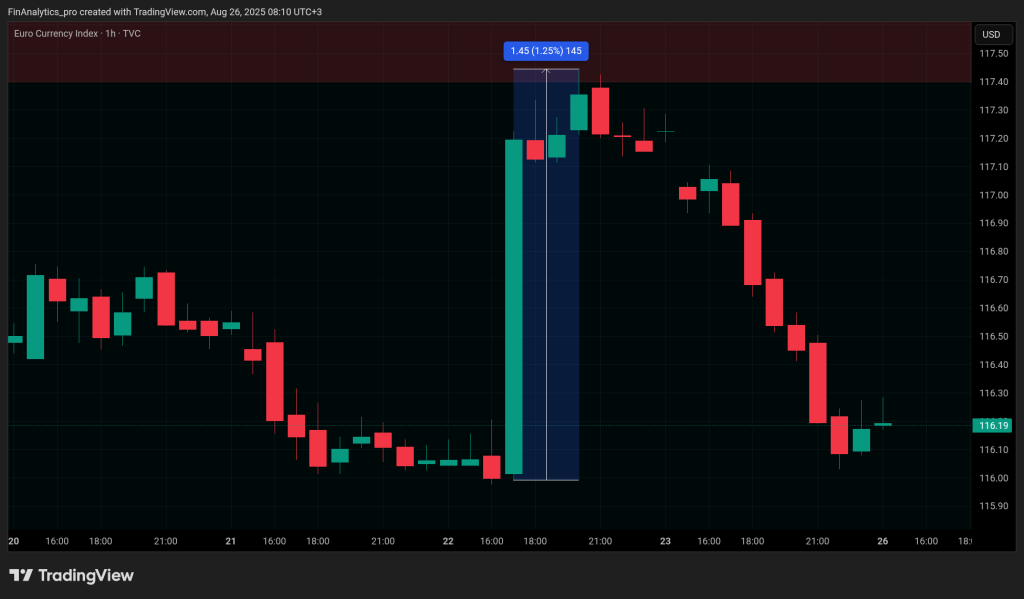
![]() Euro Index (EXY) rose by 1.25%
Euro Index (EXY) rose by 1.25%
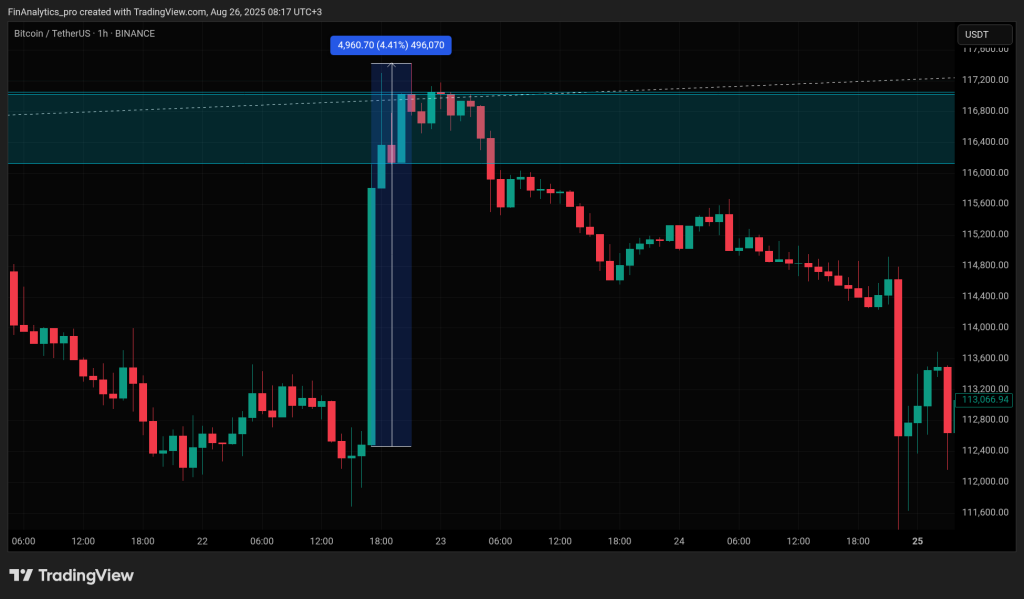
![]() Bitcoin (BTC) rose by 4.41%
Bitcoin (BTC) rose by 4.41%
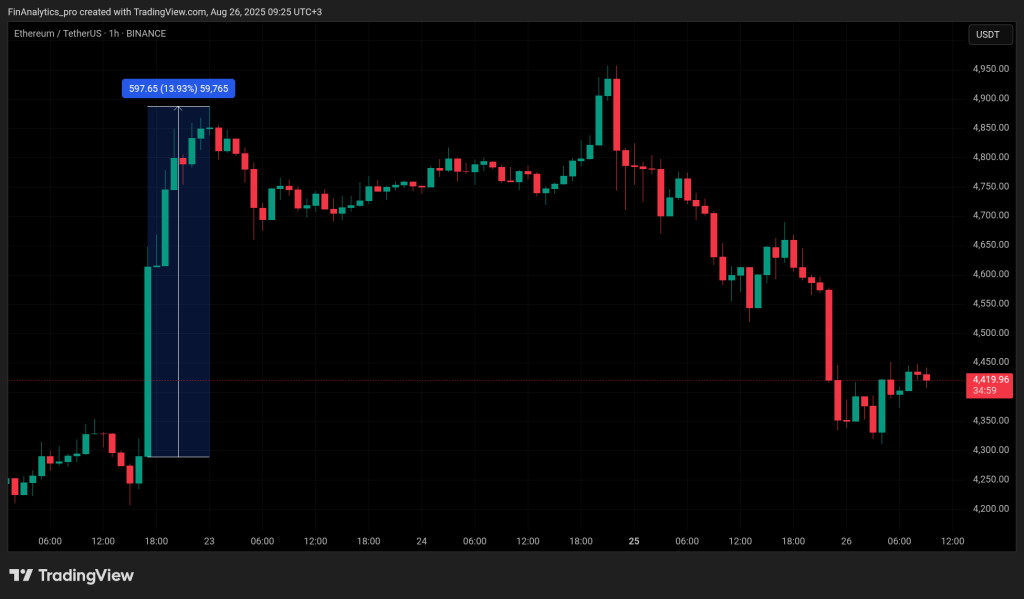
![]() Ethereum (ETH) rose by 13.93%
Ethereum (ETH) rose by 13.93%